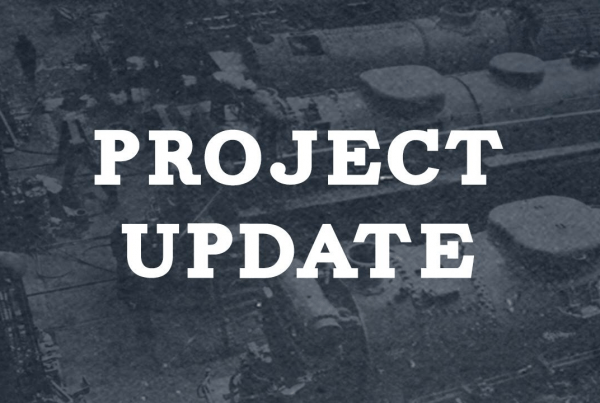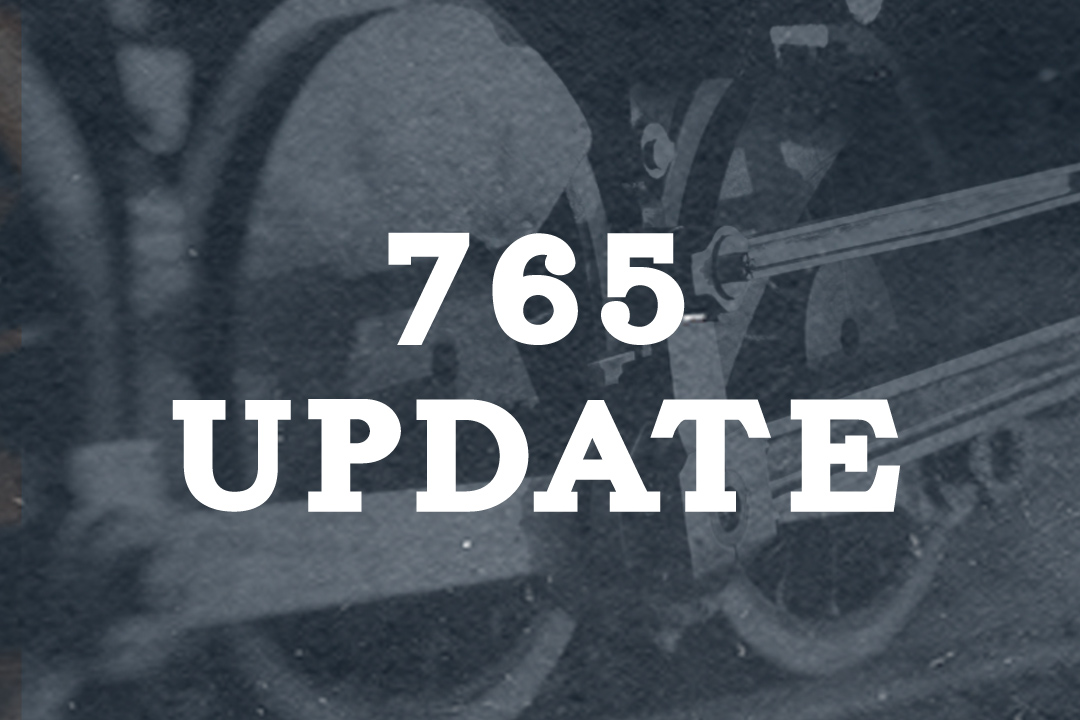Submitted by Steve Winicker.
LAST WEEKENDS SHOP ACTIVITY
We got the area under the throttle cover cleaned of cinders and soot thanks to Mark, Austin, and Derick. Derick also filled up the sand dome with sand that had been stored at the shop which not only filled the dome but opened some floor space. The Water glasses had new glass tubes installed and were repacked and mounted in the cab. Further checking on the pedestal crack, reported last week, showed that the crack was only in concrete surrounding the pedestal to protect It from cinder cutting. As such it is a non-issue. While in this case the observed potential problem was not an issue; as you clean or work on the engine, anything that looks as if it could be a problem should be reported. Finding problems before they cause a failure is the main mission of the inspection so if there is any doubt report it and we can look it over.
Other projects were worked on as well.
- Old floor and doors were removed from the 3671 (open air car) This work continues.
- The plywood underlayment on the roof of the box car was trimmed and patch material worked into the cracks, staple holes and other defects. The roof is ready for drip edge and roofing.
- Banging was heard on the 358 so I am assuming some items on the to do list were taken care of on that project as well.
- Some painting was done on the baggage car, thanks to Mr. Homco.
UPCOMING ACTIVITIES
The inspection of the 765 is coming along. Next week I intend to spend some time checking the connections between the water column, water glasses and low water alarm to be sure they are free of scale. Running the chain rattler and turbines through the syphons and arch tubes can be undertaken this coming week.
While I don’t have control over other projects it appears we will be removing trucks from the 451 to replace them with roller bearing trucks later. Demolition will likely continue the 3671 floor and among other items adding a second coat of paint to the box car are likely on the schedule.
SAFETY SENSE
Safety is everyone’s responsibility! As a volunteer, you should:
- Learn to work safely and take all rules seriously.
- Recognize hazards and avoid them.
- Report all accidents and injuries regardless how minor
- Inspect tools before use to avoid injury.
- Wear all required personal protective equipment.
On the other hand, it is management’s responsibility to:
- Provide a safe and healthy workplace.
- Provide extraordinary personal protective equipment.
- Train employees in safe procedures and in how to identify hazards.
Everyone must be aware of potential hazards on the job:
- Poor housekeeping results in slips, trips and falls.
- Electricity can cause shocks, burns or fire if not handled properly.
- Poor material handling may cause back problems or other injuries.
- Tools and equipment can cause injuries if guards or protective devices are disengaged.
Always use the protections that are provided on the job:
- Guards on machines and tools keep body parts from contacting moving equipment.
- Insulation on electrical equipment prevents burns, shock and fire.
- Lockout/tag out assures equipment is de-energized before it is worked on.
- Assure equipment that is tagged out is not operated.
- Personal protective equipment shields your body from hazards you may face on the job.
In case of emergency:
- Understand alarms and evacuation routes.
- Know how to notify emergency response personnel.
- Implement a procedure for leaving the scene safely so emergency personnel can do their job.
- Wipe up spills promptly and correctly.
Safety benefits everyone including our Shop visitors. Remember that each and every one of us are responsible for the safety of our visitors. By incorporating safety rules, members, contractors, and visitors avoid injury as well as exposure to hazardous substances.


